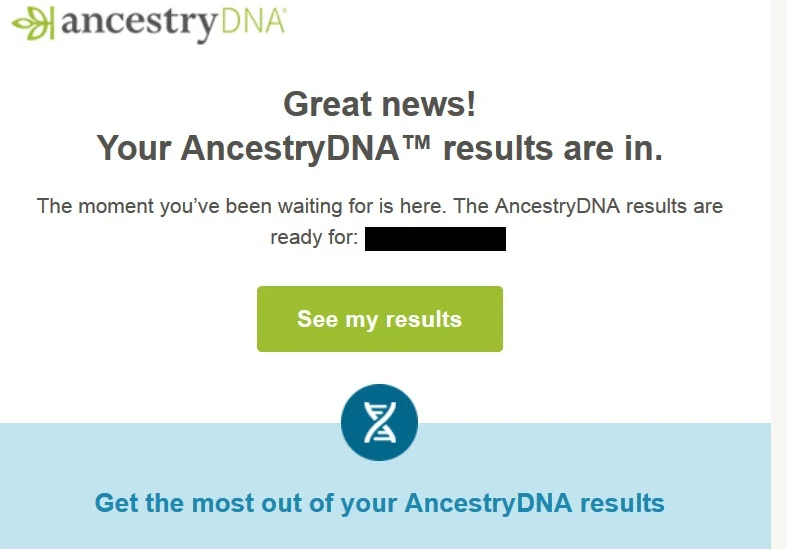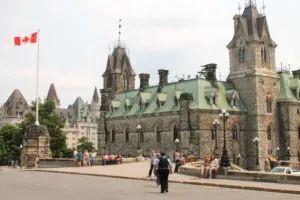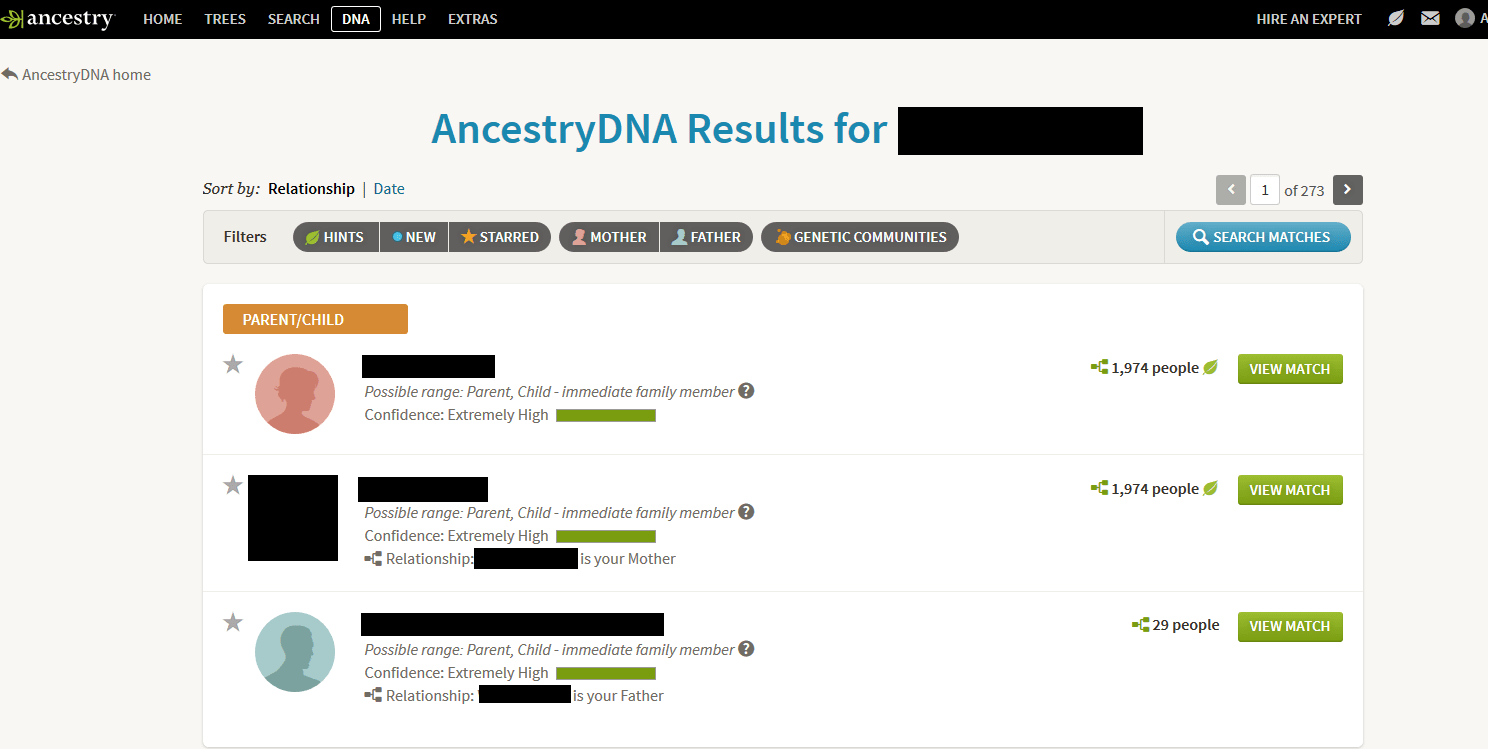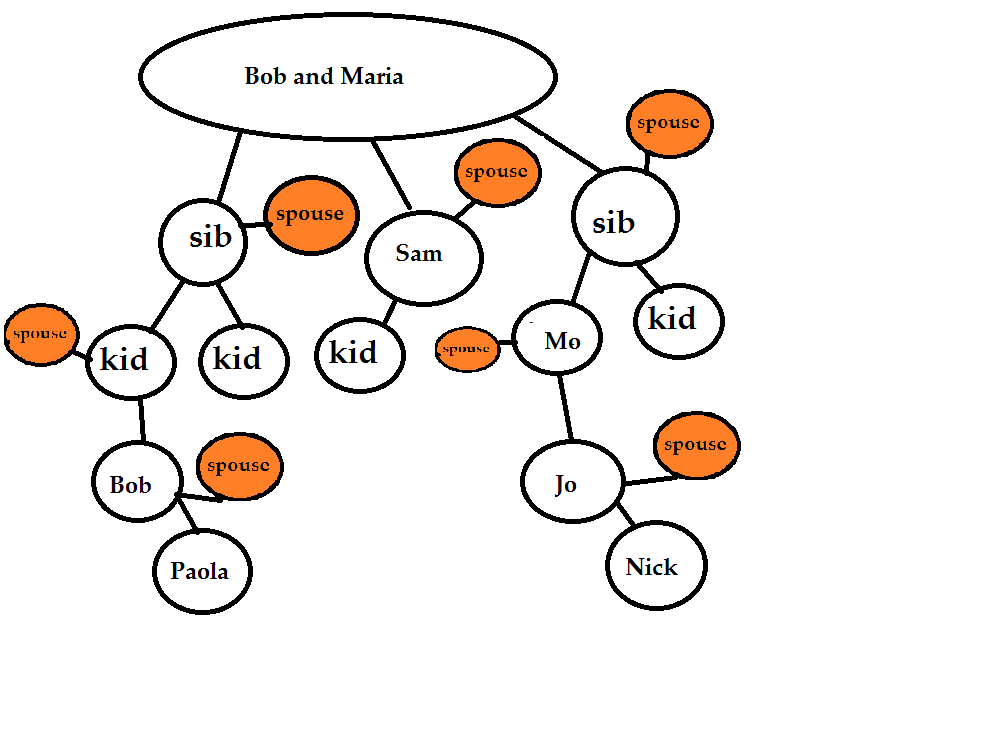This post will help you understand your Ancestry DNA results. People do the Ancestry DNA test for all sorts of different reasons, and sometimes the results can be confusing or unexpected. In this article, I will show you how to read DNA results: Ancestry DNA.
(If you haven't done an Ancestry DNA test yet, you might be interested in reading the post that I wrote about what you can learn from the test.)

How to Read DNA Test Results: Ancestry DNA
Your results are divided up into three distinct sections. When you log in to your Ancestry DNA results page, you will see your:
- DNA Story (i.e. where your ancestors were from)
- DNA Matches (i.e. these people are related to you!)
- DNA Circles (recent common ancestors shared with DNA matches)
In the sections below, I will explain what these three sections are, and briefly how they came up with the information included in them.
What is the DNA Story on Ancestry results?
Your DNA Story shows you where your ancestors were from, which is a fairly easy concept to understand. You might be wondering how the company can possibly come up with this information.
I know that I was curious about this when I first got started several years ago. It works like this (super simplified):
- Ancestry DNA (or any of the other testing companies) has a database filled with the DNA of thousands of people from all over the world. This is called their sample population, for our purposes. In order to have their DNA included in the sample population, the person needs to prove that their family has lived in the same geographic area for several generations.
- Using the sample population, Ancestry DNA is able to determine, basically, what DNA from that region "looks like" at a genetic level. They create a "reference panel" from the DNA obtained from the sample population.
- When you send in your DNA test, the laboratory compares your DNA sample with the reference panel, measuring similarities.
- You will then receive results, which tell you your approximate ethnicity (DNA Story/Ethnicity Estimate).

Are the DNA Story Ethnicity Estimate results accurate?
Generally speaking, the DNA Story is a pretty good representation of the ethnic makeup of your most recent ancestors. Also, note that I wrote "most recent ancestors".
To understand why I say that, you'll have to know a little about how DNA is passed down (inherited):
- A child inherits 50% of their DNA from each parent
- This means that 50% of each parent's DNA is NOT inherited by the child
- When the child has a child (a grandchild of the original relative), the child will only inherited 50% from each parent, so an additional 50% of DNA is NOT inherited.
- The grandchild of the original relative only has, on average, 25% shared DNA with the grandparent.
- A great-grandchild will share, on average, only 12.5%
- And finally, a great-great grandchild will only share, on average 6.25% with the great-great-grandparent
- And so on, and so on.
I wrote "on average" for a reason. There are ranges of shared DNA. Remember that the child inherits 50% of DNA from each parent?
There is no way to know or determine which 50% the child will inherit.
And as the relationship becomes more distant, there is a very distinct possibility (and as it becomes even more distant, a probability) that the descendant will share absolutely no DNA with the "original" ancestor.
For example, I would share DNA with some of my great-great-great-great grandparents, but it would be impossible for me to share DNA with all of them. This means that the "ethnicity" of some of my ancestors will not show up in my DNA results.
Take a Peek at Your DNA Story Ethnicity Estimate Results
When you click on the "View Your DNA Story" button, you'll go to a completely different page where you can explore your results in dept. There are a few important things to note on this page.
There is so much that sometimes people are overwhelmed and don't explore as much as they could.
What are Ethnicity Regions on Ancestry DNA?
In the box that appears that is titled "Overview", you can click the items below the title. Click on Ethnicity Regions, and you will see the estimated ethnicity percentages of what I call your "major ethnicities".
If you click on the little plus button next to "Low Confidence Regions", you will be able to see your "trace ethnicities".
Don't ignore the low confidence regions! In my experience, these usually aren't "wrong". Instead, they are almost always super small amounts inherited from one or more very distant ancestors.
You can explore the map, as well. If you click on one of the ethnicity regions, the map will highlight that region and show you where it is typically found.
You will see that the regions are generally very large and cover more than one country.
This is really important, since some people get very confused or upset when they find an ethnicity that they weren't expected (or don't find one that they were expecting). It doesn't always mean that you were told lies about your family's background!
For example, many people from Germany show Eastern European ethnicity, and many people from Eastern Europe show Western European ethnicity (i.e. "German"). The reason for this is because the areas are just so close to each other - there has been back and forth between the regions for hundreds and hundreds (if not thousands and thousands) of years. Admixing, as it is called, is to be expected.
And as an additional comment on the way that DNA is inherited, if you were to test your children, you will find that they might not show those "trace" ethnicities that show up on yours. There are some on my parents' ethnicity estimates that I didn't inherit.
This is one reason why it is great to test your parents, grandparents, and aunts and uncles (or great aunts and uncles) to see what DNA they inherited that you did not - a perfect way to find some of that "lost" DNA.
What are Migrations and Genetic Communities?
Using methods similar to the ethnicity estimate model, Ancestry DNA is able to determine with fairly good accuracy, where your ancestors might have lived. For example, I have deep colonial US roots on both sides of my family, and my DNA shows it.
I belong to the Settlers of Massachusetts, Vermont and New Hampshire and the Settlers of New England and the Eastern Great Lakes Genetic Communities. My mother, however, since she only has one line of her family with colonial roots, only belongs to the Eastern European Genetic Community.
The number and type of Migrations or Genetic Communities that you will belong to is based on, once more, the way in which your DNA was inherited over the years. My mother's full sister, for example, belongs to the Early Settlers of New York Genetic Community as well as the Eastern European community.
It's basically just the luck of the draw - my aunt obviously inherited DNA that my mother doesn't have, and it showed up for Ancestry's test.
A cool little feature of the Genetic Communities: If you click on the name of the community, you a new screen will open. At the top you will see "story" and "connection".
The story basically describes the region and immigration patterns over history.
If you click on connection, and scroll down a bit, you can actually access your DNA matches that also belong to this community AND see the common surnames that show up among them. It's a tool that can help you with your family research.
Note: Not all of those matches that belong to the community match you because of that. It's possible that you both happen to belong to the same Genetic Community because of similar roots, but that you aren't related in that way.
If they are on your DNA match list, you are definitely related, however, it just might be through a different line/ancestor.
What Are My DNA Matches?

Believe it or not, many people who do the Ancestry DNA test never even realize that they also have access to a gigantic list of DNA relatives! It's incredible to me, as one of my favorite things to do after the kids are in bed is go through my DNA match list to look for new finds.
As with the DNA Story Ethnicity Estimate results, the DNA match list also has a few caveats.
Before we get started, I can say these things for sure, without a doubt (unless you are some sort of modern medical miracle or have had some very rare medical procedures):
- There is no doubt that a parent/child match to you is either a parent or a child
- All of your close family matches are exactly that - close family
- If you have immediate family member matches, they are immediate family to you
- 1st, 2nd, and 3rd cousin matches are, without a doubt, all related "by blood" to you. If you both know your family trees, you will be able to located each other on them.
- The only relationship predictor that is always 100% accurate is parent/child. With every other relationship, you'll have to use a combination of common sense, genealogy, and elbow grease to figure out the relationship.
I wanted to mention those items because so many people find family members that they are surprised about! It's rather incredible.
It even happened to me. And even if you can't figure out your relationship right away, it's definitely there.
You just have to think outside the box, do some research, and you'll find it.
You should know that for best results, a monthly Ancestry subscription is useful. You'll see more information about your matches this way, and that will help you learn the most about your family's origins and your DNA matches.
You don't have to have a subscription forever, though. You can still access your results without a subscription, and will still be notified about new DNA matches as more people take the test.
If you don't have a subscription yet, and you'd like to get one so that you can get the most information from your DNA results (especially your match list), I highly recommend it.
How Can Ancestry Tell How My Matches are Related to Me?
I am so glad that you are curious about this. If you read the part about your DNA Story above, you'll remember that you inherited 50% of your DNA from each parent.
Each generation, the amount shared with the original ancestors is halved, approximately.
Eventually, all of the DNA from some of the ancestors will no longer show up in legitimate descendants. This is important to know when you are thinking about, and exploring, your DNA match list.

Ancestry compares your DNA with every single kit in the database, and they can determine how many DNA segments that you share in common, and how long they are. Then, a "total centimorgans" shared (cMs) is calculated, and this is the key indicator that Ancestry uses in order to determine your approximate relationship to a particular person.
You can actually view this information, I wrote a post about how to do it, if you are interested in learning more.
As I mentioned above, the amount of shared centimorgans with a parent or child varies very little, and that's why Ancestry DNA is always able to tell you with high confidence that a match is related to you in this way.
When it comes to other relationships, however, it can get a little more tricky to figure out exact who someone is to you. And especially when it is a high amount of shared cMs, it might be especially important to you, or them, to figure it out.
For example:
- Full siblings typically share: 2200-3300 cMs
- Half-siblings typically share: 1300-2300 cMs. The catch with this amount of centimorgans, however, is that you also share this same amount of DNA with aunts/uncles/grandparents/grandchildren. You can see why it can get complicated - and sometimes people would prefer someone to fall into a particular category... family secrets sometimes are hard to swallow!
- 1st cousins typically share: 533-1225 cMs. ("Half" first cousins can share half of those amounts!)
- 2nd cousins typically share: 46-515 cMs (Note: There has never been a proven case of someone not sharing DNA with a 2nd cousin)
- 3rd cousins typically share: 0-217 cMs (You will share DNA with only about 90% of your 3rd cousins)
- 4th cousins typically share: 0-127 cMs (You will only share DNA with about 50% of your 4th cousins)
- 5th cousins (only 10% of your 5th cousins will match you!!)
If you notice from the list above, the probability that you match your relatives is reduced dramatically the more distant the relationship is. This is because of the way that DNA is inherited.
You read that 50% of DNA is inherited from each parent.
Even full siblings, however, will not inherited the same 50%. This means that there will be a lot of DNA that the children of those children (first cousins) will not share in common.
The great-grandchildren of that couple will share even less, and so on and so on.
Eventually, at the 3rd cousin level, there will be some absolutely genealogically related cousins who share absolute ZERO DNA.
This can trip people up, especially when they are expecting to find certain people on their DNA list.
How to Access Your DNA Matches on Ancestry DNA
From your main DNA results page (the "DNA Results Summary" page), just click on "View All DNA Matches" - it's a green rectangle. From there, you will be taken to a completely different page, which is basically a really, really long list.
Here are some quick tips about the list:
- The list shows your relatives from closest first, to distant towards the end. The people who come first on the list are the most closely related to you.
- There are about 50 people listed per page.
- On the main DNA Results Summary page, it tells you how many 4th cousins or closer you have, but you will have many, many more distant cousin matches (and not all of those are as distant as you might think).
- You can search through these matches by place of birth, or surnames contained in their family trees.
- You can sort the matches based on whether they are new (i.e. you have not looked at them before), by Genetic Community or Migration, or by Shared Ancestor Hints.
What Can You Learn About Your DNA Matches?
Starting from your DNA match list, choose a match to examine more closely by clicking the "View Match" button. You will get taken to the "match page", where you can find the following information about your match:
- Their username
- Sometimes where they currently live
- The last time that they logged into Ancestry
- Their major and trace ethnicities
- Matches that you share in common
- A button to contact the match
- The amount of centimorgans that you share with your match
- The estimated relationship - typically a very loose estimate
Pro tip: From your mobile phone, you can access the Ancestry DNA site and compare your DNA ethnicities with those of your DNA matches, which is very cool.
If you have an Ancestry subscription (recommended) you will also be able to:
- Compare your family tree to theirs, or browse their tree for familiar surnames to figure out how you are related.
- View "Shared Ancestor Hints" - basically, your tree is compared with those of your DNA matches in order to see if you have a known shared ancestor in common. In order to see these, however, you will need to make sure that your DNA is attached to your tree.
Recommended Strategy for Going Through DNA Matches
This isn't a magic strategy, but it's a winner. If you follow this advice, no matter who you are or what you are trying to learn from your DNA results and matches, this strategy will help you:
- Starting with your closest match, go through the matches one by one. Just do a few each day, or a few whenever you have time.
- There is an option on the match page below the username to add a note. Use that function to make notes about how you are related to the match, whether you have been in touch with them, and anything else interesting that you've learned, as well as any questions that come up in relation to the match.
- Consider contacting each DNA match to see what you can learn from them, and what you can share to help them in their research. Genealogy should be a two-way street!
and now finally...
What is a DNA Circle?
A DNA Circle is basically Ancestry DNA's way of confirming, or saying, that you are related to a certain ancestor. Other people will be in the DNA Circle with you. Some of these people will be relatives that you know, and others will be relatives that you have never heard of.
Some people will not be on your DNA list, but will still be in the DNA Circle with you. These are still your genealogical relatives, even if they don't match your DNA.
In order to "get" a DNA Circle in your results, you need to do three things:
- Make sure that your DNA is attached to your family tree.
- Add as many generations to your family tree as you can.
- Wait for a few days.
Not everyone is placed in a DNA Circle, and if your tree is only built back a few generations, or you don't have a tree at all (say, for example, you are adopted), then you will not have any DNA Circles.
What does it mean if you are in a DNA Circle?
Since Ancestry DNA uses your DNA along with your family tree, plus the DNA and family tree of other members, if you are in a DNA Circle, it is very likely that the ancestor is correct.
I know that it might seem obvious that you are actually related to your ancestor. Believe it or not, however, everyone's family tree takes twists and turns.
Adoptions in past years were not nearly as formal procedures as they are now. People had extra marital affairs, despite the behavior being taboo.
So it is actually a big deal to get into a DNA Circle - congratulations!
If you don't have a lot of DNA Circles, or don't even have any, don't worry too much about it. It took me a while to get my first, and even though I have an extensive tree that I feel very confident about, I don't have as many DNA Circles as some people do.
I think it's a combination of a family tree and the number of other relatives descended from my ancestors who have also taken a DNA test.
I am excited about this developing technology and can't wait to see what kind of tools (like DNA Circles) Ancestry decides to implement.
Further reading
- Low Confidence Regions on Ancestry DNA
- The Iberian Peninsula DNA
- How to Understand Your DNA Results Part 1
- How to Understand Your DNA Results Part 2
- How to Build a Family Tree on Ancestry
- What is a Sibling DNA Match
- Best Websites for Family Tree Research
- How to Contact DNA Matches
- What Can I do With My DNA Results?
Conclusion
I hope that this post was helpful to you, and that you learned a little bit more about how to interpret your DNA results. If you have any questions or comments about something that I mentioned here, I would love to hear from you in the comments.
This is an open forum, and I like to encourage discussion - it's how we all learn.
Thank you so much for stopping by!


Ernest Serpas
Sunday 26th of December 2021
I submitted my dna test and cannot recall what I did with it. Can get a copy of the results.
Mercedes
Thursday 6th of January 2022
You might be able to get in touch with Ancestry.com customer service, that's the best place to start, and I am sure that they will do their best to help you. Sincerely, Mercedes
Gigi Kay
Wednesday 20th of September 2017
Very clear, thank you! Fellow ??:-)
Mercedes
Thursday 21st of September 2017
Thank you for reading the post, and for your comment :)